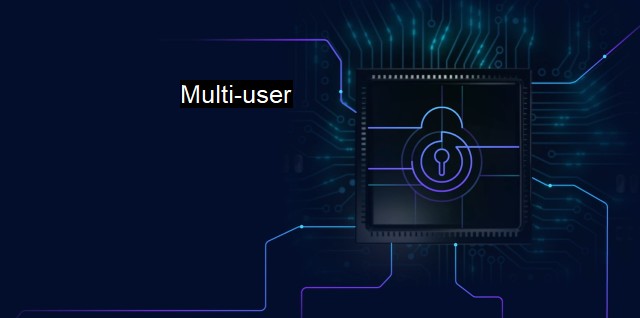What is Multi-user?
The Importance of Securing Multi-User Environments in the Cybersecurity and Antivirus Landscape
Multi-user is a term commonly associated with the fields of cybersecurity and antivirus. In computing, it refers to a type of operating system that permits multiple users to access and utilize a single system's resources simultaneously, but independently. The users or administrators can be at different locations, utilizing different devices like personal computers, laptops, or mobile devices, and yet they can access the system concurrently. Applications such as email, project management tools, database systems, and various network solutions often operate on multi-user systems allowing various individuals or groups to interact and collaborate effectively in real-world time. This powerful capability of the multi-user system also creates potential risks in the realms of cybersecurity and data integrity.Multi-user systems present a unique set of challenges and opportunities. Each user on a multi-user system often has a distinct set of permissions and rights, which restrict what they can see and do within the system. User rights management, therefore, becomes a critical aspect of ensuring cybersecurity in multi-user environments. Inappropriately managed access controls can lead to unauthorized users gaining access to sensitive data or resources, posing serious cyber threats such as data breaches, identity theft, and fraudulent activities.
To protect systems from such threats, robust cybersecurity measures need to be put in place. These might include firewalls to monitor and control incoming and outgoing traffic, updated antivirus software to protect against harmful viruses and malware, encryption tools to safeguard sensitive data, access control mechanisms to regulate user permission levels, and intrusion detection and prevention systems to detect and prevent unauthorized access.
When considering virus protection in a multi-user context, antivirus programs need to be designed to run constantly in the background, scanning files and programs for potential threats. they should be constructed to update automatically or prompted by an administrator to protect against the latest threats. It is imperative that antivirus software not only checks for viruses and malware in user files and applications but also performs routine system scans to detect potential issues in the backend operating systems.
Another key aspect of multi-user environments is not merely the presence of robust antivirus software but also the intelligence behind its deployment. Antivirus software must be able to differentiate between routines executed by the system, programs, and different types of users. It needs to recognize authorized and expected behaviors, as against suspicious or potential attack patterns. the software must be flexible enough to accommodate different needs and rights for each individual user.
Today's businesses, large corporations, institutions, and even home networks rely extensively on multi-user systems. Given this reality, incorporating robust cybersecurity measures is essential, however challenging it might be. Antivirus codes and cybersecurity protocols need to be interwoven seamlessly into the system to ensure that while the framework runs smoothly and efficiently for users, it also remains securely shielded from unauthorized access and cyber threats.
In conclusion multi-user systems offer the combination of shared system resources with personalized access capabilities. But as powerful as they are, these systems need careful management in terms of assigning user roles and privileges, monitoring system access and usage, and safeguarding the system and its data. A balance has to be struck between ensuring data security and allowing smooth operation of computing and network systems for multiple users. A series of proactive efforts including integrated antivirus program deployment, stringent access control, update maintenance, and a keen understanding of each user's security profile can contribute to maintaining this balance.

Multi-user FAQs
What is multi-user antivirus?
Multi-user antivirus refers to a type of antivirus software that is designed to protect multiple users and devices simultaneously. It is commonly used in environments where multiple users share access to a network or a group of devices.How does multi-user antivirus work?
Multi-user antivirus works by centralizing the management of antivirus protection across multiple devices and users. This means that a single administrator can deploy and manage antivirus protection on all devices used by multiple users, without having to install the software on each device individually.What are the benefits of using multi-user antivirus?
The benefits of using multi-user antivirus include centralized management of antivirus protection, reduced costs, and increased efficiency. With a multi-user antivirus solution, administrators can save time and resources by managing antivirus protection across multiple devices and users from a single console.Is multi-user antivirus more secure than single-user antivirus?
Multi-user antivirus solutions can be more secure than single-user antivirus solutions, as they provide centralized management and control over antivirus protection. With multi-user antivirus, administrators can monitor and manage antivirus protection across all devices and users, ensuring that all systems are up to date and protected against the latest threats. However, the level of security provided by any antivirus solution ultimately depends on the specific features and capabilities of the software.| | A | | | B | | | C | | | D | | | E | | | F | | | G | | | H | | | I | | | J | | | K | | | L | | | M | |
| | N | | | O | | | P | | | Q | | | R | | | S | | | T | | | U | | | V | | | W | | | X | | | Y | | | Z | |
| | 1 | | | 2 | | | 3 | | | 4 | | | 7 | | | 8 | | |||||||